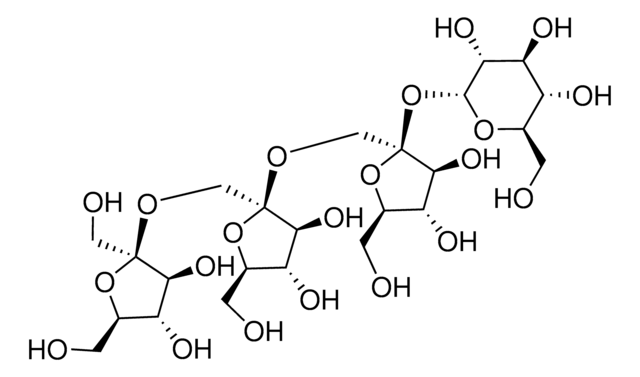84727
Sulfuric acid
for the determination of nitrogen, ≥97.0%
About This Item
Polecane produkty
klasa czystości
for inorganic trace analysis
Poziom jakości
agency
suitable for SM 4500 - NH3
gęstość pary
<0.3 (25 °C, vs air)
ciśnienie pary
1 mmHg ( 146 °C)
opis
Nominally 95-98% H2SO4
Próba
≥97.0%
Postać
liquid
jakość
for the determination of nitrogen
zanieczyszczenia
≤0.0005% total nitrogen (N)
pozostałość po prażeniu (900°C)
≤0.0005%
kolor
clear
tw
~290 °C (lit.)
gęstość
1.840 g/mL at 25 °C (lit.)
ciąg SMILES
OS(O)(=O)=O
InChI
1S/H2O4S/c1-5(2,3)4/h(H2,1,2,3,4)
Klucz InChI
QAOWNCQODCNURD-UHFFFAOYSA-N
Szukasz podobnych produktów? Odwiedź Przewodnik dotyczący porównywania produktów
Powiązane kategorie
Opis ogólny
Zastosowanie
Hasło ostrzegawcze
Danger
Zwroty wskazujące rodzaj zagrożenia
Zwroty wskazujące środki ostrożności
Klasyfikacja zagrożeń
Eye Dam. 1 - Met. Corr. 1 - Skin Corr. 1A
Kod klasy składowania
8B - Non-combustible corrosive hazardous materials
Klasa zagrożenia wodnego (WGK)
WGK 1
Temperatura zapłonu (°F)
Not applicable
Temperatura zapłonu (°C)
Not applicable
Środki ochrony indywidualnej
Faceshields, Gloves, Goggles, type ABEK (EN14387) respirator filter
Choose from one of the most recent versions:
Masz już ten produkt?
Dokumenty związane z niedawno zakupionymi produktami zostały zamieszczone w Bibliotece dokumentów.
Powiązane treści
This page is intended to make it easier to find the consumables you need based on the analytical method you’re using. Methods included on this page come from the EPA, Standard Methods and ASTM.
Nasz zespół naukowców ma doświadczenie we wszystkich obszarach badań, w tym w naukach przyrodniczych, materiałoznawstwie, syntezie chemicznej, chromatografii, analityce i wielu innych dziedzinach.
Skontaktuj się z zespołem ds. pomocy technicznej



